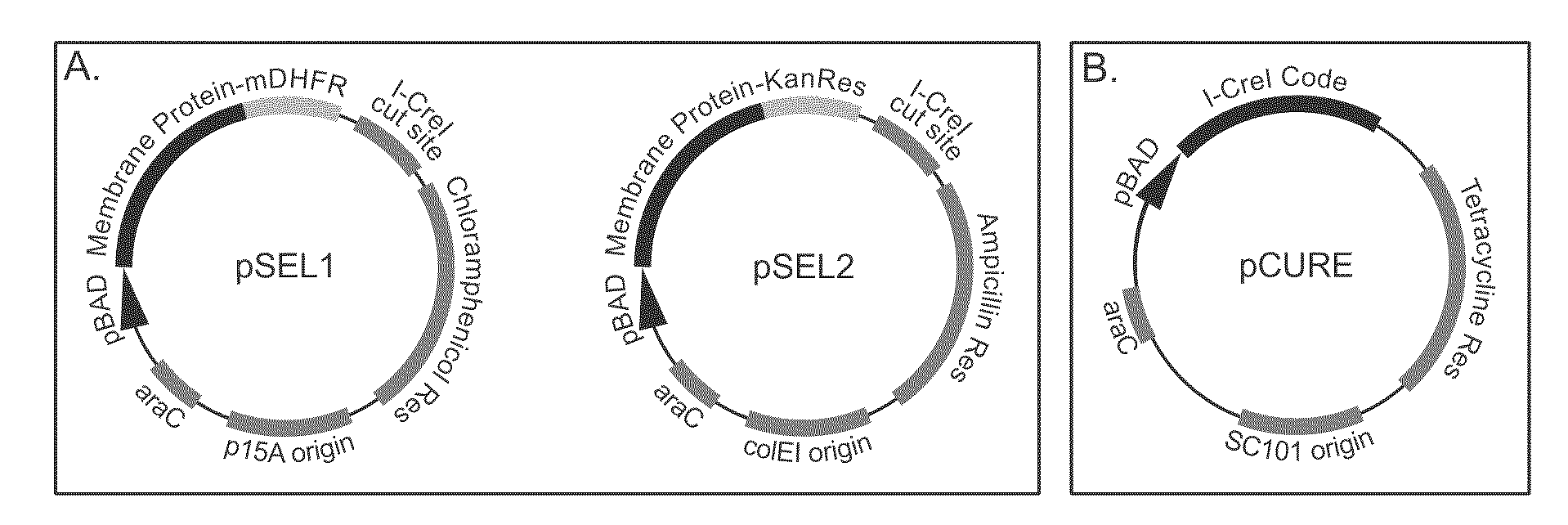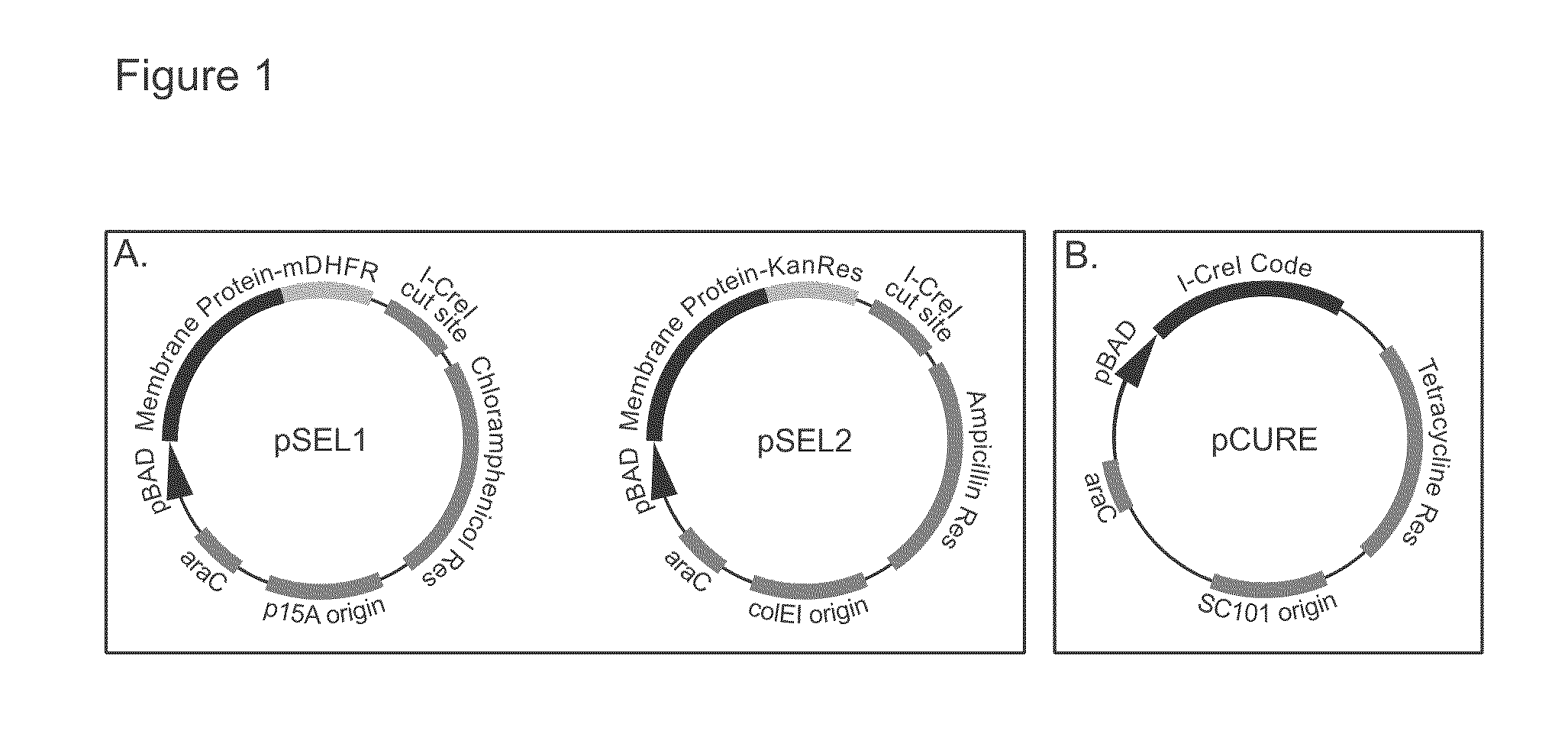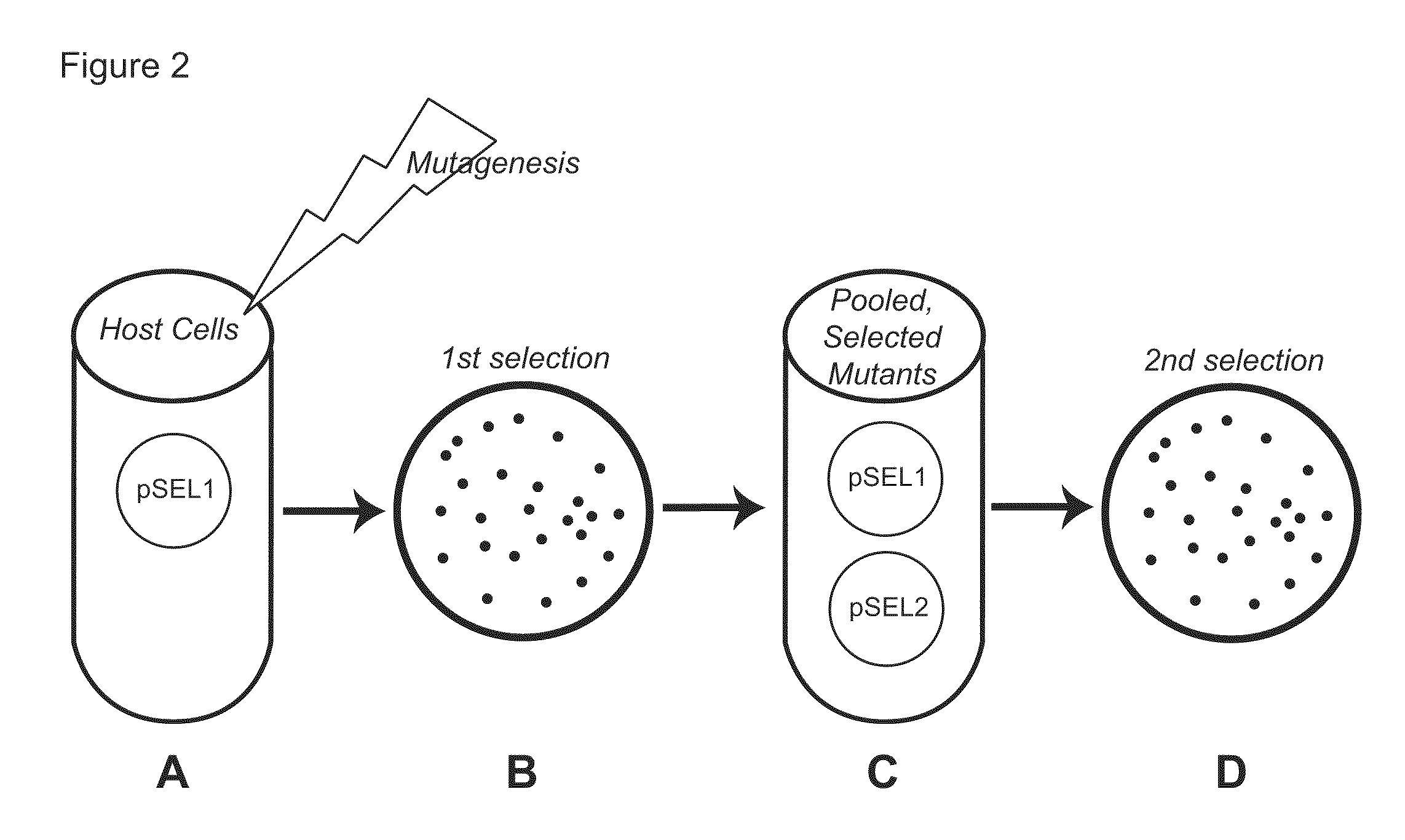Genetic selection system for improving recombinant protein expression
a gene selection system and recombinant protein technology, applied in biochemistry apparatus and processes, fusion with spectroscopic/fluorescent detection, microorganisms, etc., can solve the problem of extremely low probability of obtaining mutations that confer resistance to both drugs, and achieve the effect of improving the ability to recombinantly express target proteins, reducing and improving the probability of obtaining mutations that confer resistan
- Summary
- Abstract
- Description
- Claims
- Application Information
AI Technical Summary
Benefits of technology
Problems solved by technology
Method used
Image
Examples
example 1
The Selection System is Effective
[0085]We initially tested the selection system provided by this invention by comparing growth on selective media of cells producing a well expressed membrane protein (GlpF from E. coli) and those expressing a poorly expressed membrane protein (SPP from Archaeoglobus fulgidus). In this example, GlpF and SPP were expressed using the plasmids pSEL1 and pSEL2, which are illustrated in FIG. 1A. As shown in FIG. 4, cells harboring GlpF in pSEL1 and pSEL2 and those harboring SPP in pSEL1 and pSEL2 both survived on inducing media without drugs, indicating that induction of neither protein is lethal to cells. In the presence of selecting drugs without induction, none of the constructs allowed survival. Under inducing conditions and in the presence of selection, only cells expressing the GlpF fusions survived. Thus, our selection system effectively and cleanly discriminated between cells expressing high levels of target membrane protein and those expressing li...
example 2
Curing of Selected Mutants
[0086]After mutant selection, it is necessary to remove the selection plasmids from the strains.
[0087]We have found, however, that traditional curing methods were highly inefficient when applied to the strains and plasmids used in our work. We therefore developed a rapid and efficient curing method, which is provided by this invention and which is illustrated in FIG. 3.
[0088]In the curing method of this invention, the plasmids used during selection are eliminated by in vivo digestion with a rare-cutting endonuclease, which in the preferred embodiment is the homing endonuclease I-CreI (Seligman et al. 1997). As shown in FIG. 1A, the recognition site for I-CreI was introduced into pSEL1 and pSEL2, the selection plasmids in the preferred embodiment of this invention. To remove the selection plasmids, we introduced a third plasmid, which we refer to as the curing plasmid, which encodes a rare-cutting endonuclease and preferably contains a temperature sensitive ...
example 3
Selection of Strains that Improve Expression of the Target Protein Rhomboid-Rv1337 from Mycobacterium tuberculosis (MTb)
[0089]With an effective selection system and a highly efficient curing system, we tested our ability to isolate E. coli mutants that improve membrane protein expression. We targeted the MTb alpha-helical inner membrane protein Rv1337, a rhomboid family protein, because it is a relatively large protein known from prior work to be expressed at low levels detectable by western blotting. In addition, rhomboid-Rv1337 has a cytoplasmic C-terminus, which is necessary for selection with the C-terminal selectable marker fusions used in pSEL1 and pSEL2.
[0090]Selection was performed in two steps as illustrated in FIG. 2. First, TOP10 cells harboring pSEL1 encoding rhomboid-Rv1337 were mutagenized with either the base analog 2-aminopurine (2AP) or the mutator gene mutD5, and colonies were selected for their ability to grow on media containing the drug trimethoprim. In the seco...
PUM
| Property | Measurement | Unit |
|---|---|---|
| Temperature | aaaaa | aaaaa |
| Pressure | aaaaa | aaaaa |
| Flexibility | aaaaa | aaaaa |
Abstract
Description
Claims
Application Information
 Login to View More
Login to View More - R&D
- Intellectual Property
- Life Sciences
- Materials
- Tech Scout
- Unparalleled Data Quality
- Higher Quality Content
- 60% Fewer Hallucinations
Browse by: Latest US Patents, China's latest patents, Technical Efficacy Thesaurus, Application Domain, Technology Topic, Popular Technical Reports.
© 2025 PatSnap. All rights reserved.Legal|Privacy policy|Modern Slavery Act Transparency Statement|Sitemap|About US| Contact US: help@patsnap.com



